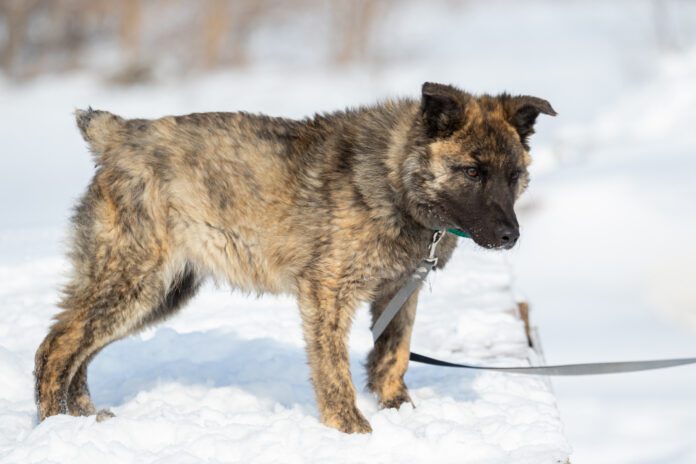They call it “happy tail syndrome,” but if your dog gets it, nobody’s happy. It’s a frequent dog tail injury, especially in happy dogs, but treatment is difficult.
Happy tail syndrome occurs when joyful, exuberant dogs with long, slender tails wag ferociously and traumatize the tip of their tail when it bangs on hard surfaces. Once there’s damage to the tail skin, the wound opens more every time they bang it. And it bleeds. A lot. It may form a clot, or a scab, while the dog is resting, but as soon as the dog is up and wagging—and hits something—the scab comes off, the wound opens up, and it bleeds again. It’s extremely frustrating.
What to do? Happy tail syndrome treatment involves finding a way to protect the tail tip from the repeated trauma. If you can, you might be able to get it to heal.
Creativity is key. It’s not easy to keep a bandage on these crazy tails, and dogs aren’t always willing to leave them in place. People have tried all kinds of things, including toilet paper rolls, cut water bottles, pool noodles, foam pipe insulating tubes, and syringe cases from your vet. Commercial kits are available that help protect the dog’s tail using protective padding devices that go into a bandage on the tail.
A couple of hints: Whatever you try, make it as lightweight as possible. The heavier the bandage, the more likely it is to go winging off with the wagging. I use white first-aid tape that runs the length of the tail for several inches and is then incorporated into the bandage over the injury. The purpose is to give the bandage more “grab,” so it can stay on. Don’t make it too tight! Leave the end open inside the protective tube for air circulation to the tail tip.
Sadly, even if you do get your dog’s tail to heal, it’s likely to happen again. You can try padding the walls, corners, and whatever he keeps hitting his tail on, but that’s hard to do and a bit unsightly when guests come over. You can try to interact with your dog only where there’s space to do so, but that’s not practical either.
Bottom line? If you can’t get it to heal, or if you’re tired of coming home to a bloody scene right out of a horror film, talk to your veterinarian about tail amputation. The procedure will take care of the traumatized tip, and if you go short enough, it will never happen again. Some of these dogs end up with cute little bob tails. They can still wag as hard as they want, and you’ll avoid the blood splatter.





